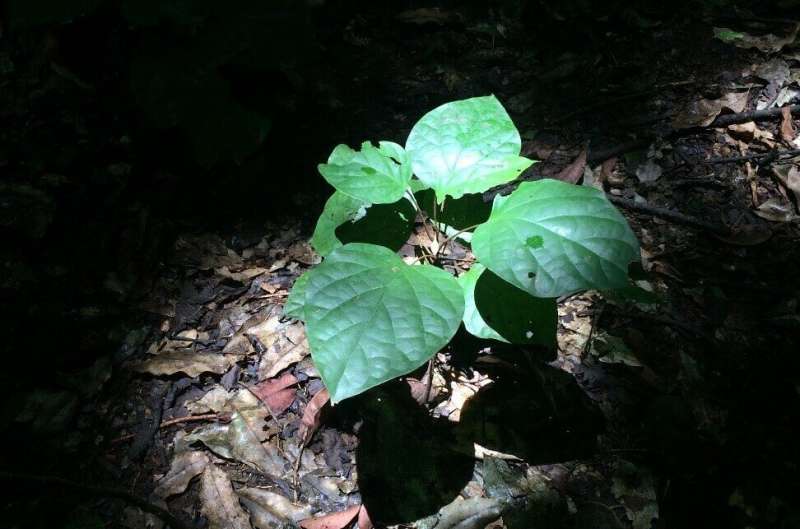Crops can adapt to grow in the shade

After detecting the proximity of vegetation, some plants, including most of the crops we eat, can plan for conditions of shade in their surroundings and modify their structure and growth to prosper with less light. This has been verified by a research group of the Plant Molecular and Cellular Biology Institute (IBMCP), mixed center of the Polytechnic University of Valencia (UPV) and the Spanish National Research Council (CSIC), in collaboration with the Center for Research on Agricultural Genomics (CRAG) of Barcelona. The researchers observed that the fall in the levels of photosynthetic pigments of the plants is a mechanism that allows them to adapt to living with less light, thus planning ahead for a possible future in the shade. The results have been published in journal Plant Physiology.
Plants use sunlight to transform atmospheric carbon dioxide into food via photosynthesis. Thus, often plants compete with others for access to this key source of energy. In forests or crop fields with high planting density, it is common for some plants to cast a shadow over others, restricting the amount of light they receive. As less light entails less energy, evolution has provided plants with mechanisms to detect the proximity of other plants that may compete for the light even before they cast a shadow over them, and thus respond appropriately.
In order to perform the photosynthesis, plants absorb specific regions of the electromagnetic spectrum, blue and red, and let the far-red pass through or reflect it. Thus, when the sunlight filters through the leaves, it loses blue and red (which is absorbed and used for photosynthesis) and has is strong in far-red. These changes in the quality of the light are a sign that other plants recognize as generated by the proximity of neighboring plants (and thus of competitors for resources), and use it to trigger a series of responses known as the shade avoidance syndrome (SAS).
Planning ahead of a future in the shade
The most studied response of this syndrome is the elongation of the plant's stem, which allows it to grow more than neighboring plants and reach the light sooner. SAS also causes a decrease in the levels of chlorophylls and other pigments created by photosynthesis, but the reason for this response was unknown until now. Now, the team from the IBMCP and the CRAG has discovered that the fall in levels of photosynthetic pigments is part of a mechanism that adapts the photosynthetic machinery to work with less light, thus getting ahead of a possible future in the shade.
The teams led by researchers from the CSIC at the IBMCP, Jaume Martínez García and Manuel Rodríguez Concepción, studied the response to changes in the quality and amount of light from different species of Brassicaceae, a family which includes important crops such as cabbage, cauliflower, broccoli, rapeseed, radish or mustard. Thus, they classified the species in two groups: those that avoid the shade and those that tolerate it. The former grew better at high intensity levels of light and elongated significantly upon sensing the signal of vegetable proximity. Those that tolerate the shade, however, barely elongated with this signal and adapted better to living with little light.
Optimize growth in a sustainable way
Furthermore, they observed that, when the species that avoid the shade were exposed to the signal that notified the proximity of vegetation and the grew with less light, their photosynthetic efficiency was better than that of the plants that had not been previously exposed to this signal. "We observed that this was due not only to a decrease in the levels of photosynthetic pigments, but also to changes in the expression of genes and chloroplast structures linked to photosynthesis," explains Manuel Rodríguez. Furthermore, the researchers verified that the mutant plants, unable to translate the signal of proximity of other plants, and the species that tolerate the shade did not show this adaptive response.
A majority of the crops that we eat are plant species that like the sun and avoid the shade, which is why knowing how they respond to the signals of proximity offers very valuable information to optimize their growth in a sustainable way. For Jaume Martínez, "being exposed to lights that emulate the signal of proximity could improve the performance of greenhouse crops by growing them with less light, which would save electricity costs."
More information: Luca Morelli et al, Light signals generated by vegetation shade facilitate acclimation to low light in shade-avoider plants, Plant Physiology (2021). DOI: 10.1093/plphys/kiab206
Provided by Asociacion RUVID




















